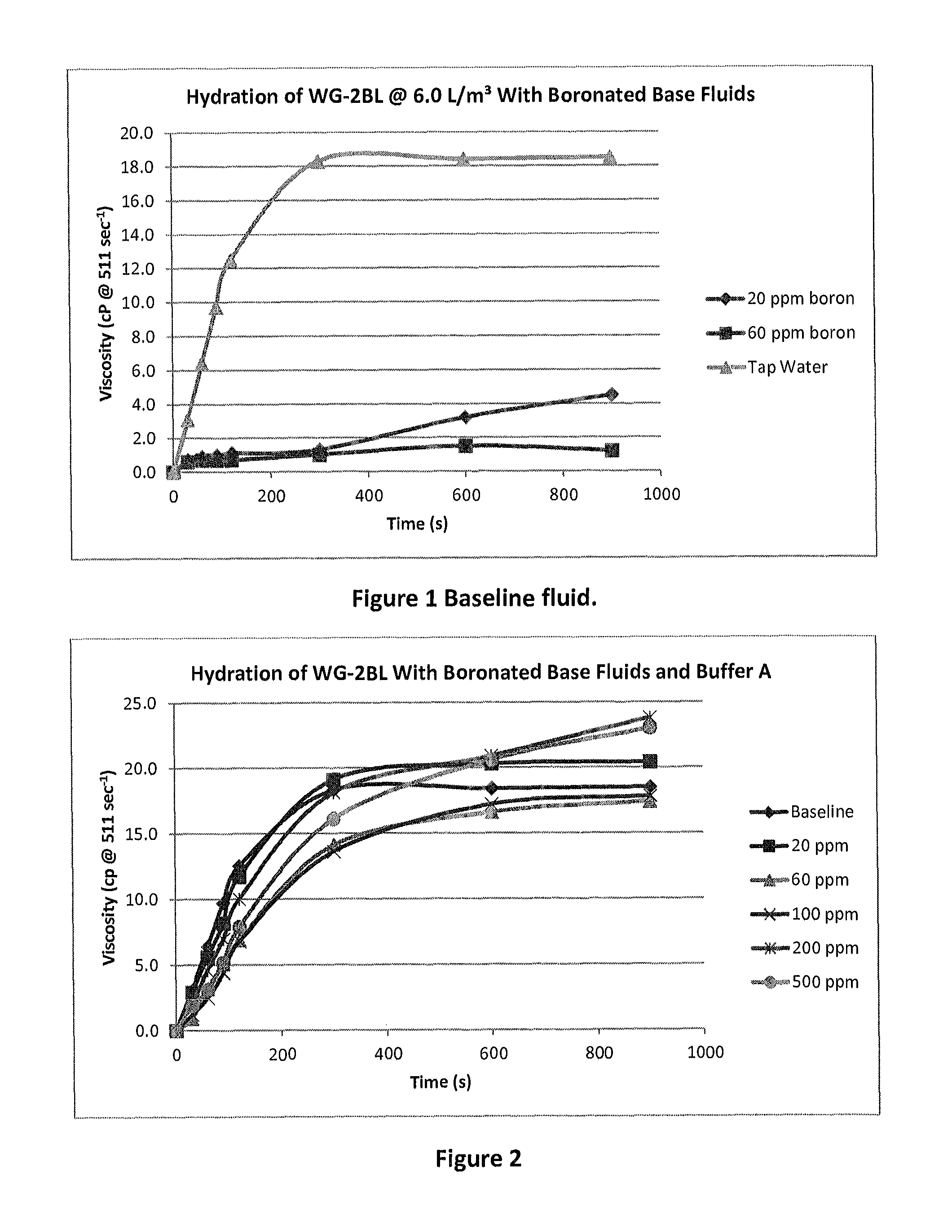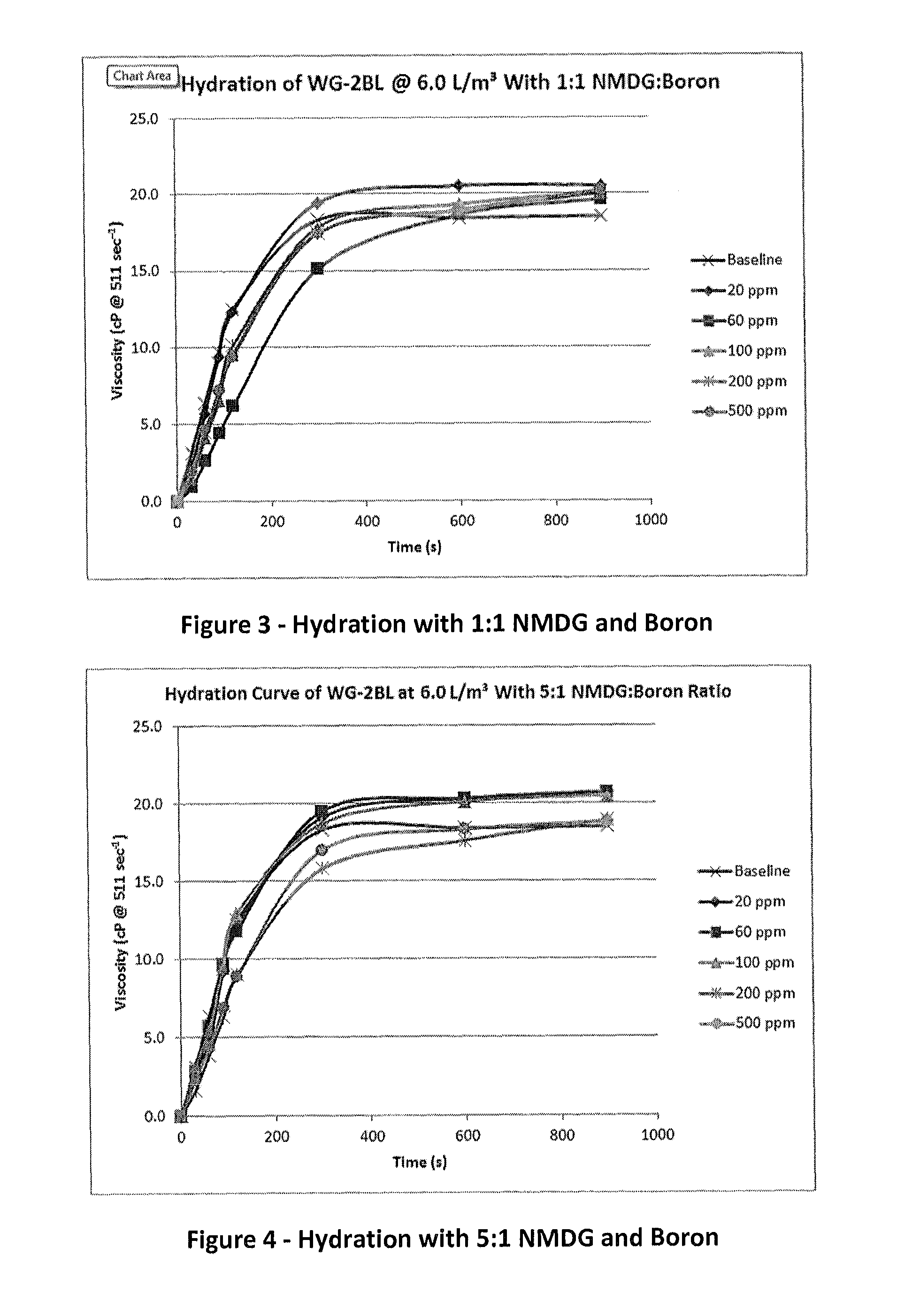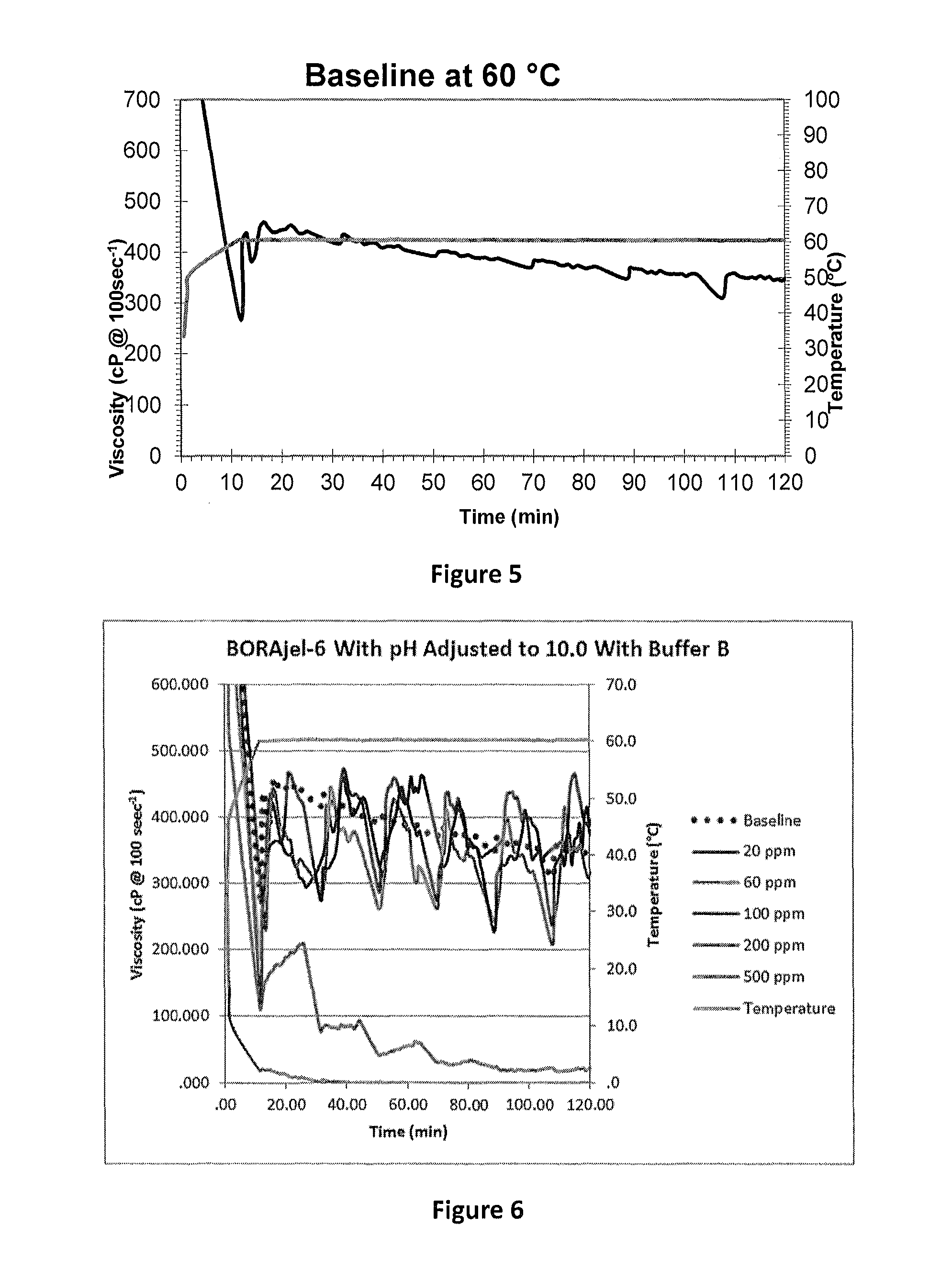Boron sequestration in fracturing fluids
a fracturing fluid and boron sequestration technology, applied in the direction of drilling compositions, chemistry apparatus and processes, etc., can solve the problems of affecting the stability of cross-linked guar gels. , to achieve the effect of stable cross-linked gels, loss of stability, and affecting the stability of cross-linked guar gel
- Summary
- Abstract
- Description
- Claims
- Application Information
AI Technical Summary
Benefits of technology
Problems solved by technology
Method used
Image
Examples
example 1
Baseline Buffered and Unbuffered Test Fluids
[0054]As a baseline, unbuffered test fluids were prepared with various boron concentrations of about 20, 60, 100, 200 and 500 ppm (mg / L). Various amounts of a solution of a sodium salt of boric acid (referred to herein as BX1), was used to achieve test concentrations of boron, which were then used to simulate a boron contaminated fluid. As used herein, BX1 has an alkaline pH as it includes an amount of sodium hydroxide to neutralize the acidity of the solution. The final pH of the simulated boron contaminated fluid, being unbuffered, increases to a maximum of about 8.5.
[0055]This artificially contaminated fluid was used with guar (6.0 L / m3 of an approximately 50% w / v guar slurried in mineral oil) to prepare a gel for fracturing and the resulting viscosities are shown below in Table 1 and in FIG. 1. In this experiment, the fluid prepared with potable tap water had successful hydration, but the presence of boron in low concentrations, withou...
example 2
Effect of NMDG
[0057]Solutions of NMDG and boron were prepared in a 1:1 molar ratio. A buffer was used to control the pH to 6.0 in the amounts shown in Table 3. The results show that the guar hydrated at all concentrations of NMDG and boron (FIG. 3).
TABLE 3Hydration with NMDG at a 1:1 ratio with boronNMDGAcetic acidguarBase Fluid ViscosityBase Fluid(g / L)(L / m3)(L / m3)pH(cP @ 511 sec−1)Tap Water0.00.06.06.518.520 ppm0.37740.26.06.020.5Boron60 ppm1.12490.46.06.019.6Boron100 ppm1.89581.46.06.020.0Boron200 ppm3.71953.06.06.020.0Boron500 ppm9.33488.06.06.520.2Boron
[0058]Further experiments were conducted by varying the NMDG:boron ratios and similar results were obtained. FIG. 4 shows the results of 5:1 NMDG:boron ratio fluids, and the resulting fluids had nearly the same viscosity response as the baseline control fluid.
example 3
Boron Remediation in Cross-Linked Fluids
[0059]In order to measure the effect of boron contamination on cross-linking performance, it was necessary to establish a baseline. Baseline gel stability of a standardized borate cross-linked fluid at 60° C. (approximately 50% w / v guar at 6.0 Lm−3, alkaline buffer at 1.5 Lm−3, and BX1 at 1.5 Lm−3) is shown in FIG. 5. All further testing was compared to this baseline.
[0060]To determine the level of boron contamination which interfered with successful gel cross-linking, a gel prepared with 6 Lm−3 of approximately 50% w / v guar was prepared in each base fluid (with boron contamination ranging from 20 to 500 ppm). Acetic acid was first added to achieve guar hydration, and subsequently alkaline buffer was added in an amount sufficient to consistently achieve a pH of 10. The results of this testing are shown in FIG. 6 and alkaline buffer loadings are shown in Table 4.
TABLE 4Alkaline buffer required to achieve pH 10BoronAlkaline(ppm)buffer (L / m3)201....
PUM
 Login to View More
Login to View More Abstract
Description
Claims
Application Information
 Login to View More
Login to View More - R&D
- Intellectual Property
- Life Sciences
- Materials
- Tech Scout
- Unparalleled Data Quality
- Higher Quality Content
- 60% Fewer Hallucinations
Browse by: Latest US Patents, China's latest patents, Technical Efficacy Thesaurus, Application Domain, Technology Topic, Popular Technical Reports.
© 2025 PatSnap. All rights reserved.Legal|Privacy policy|Modern Slavery Act Transparency Statement|Sitemap|About US| Contact US: help@patsnap.com



